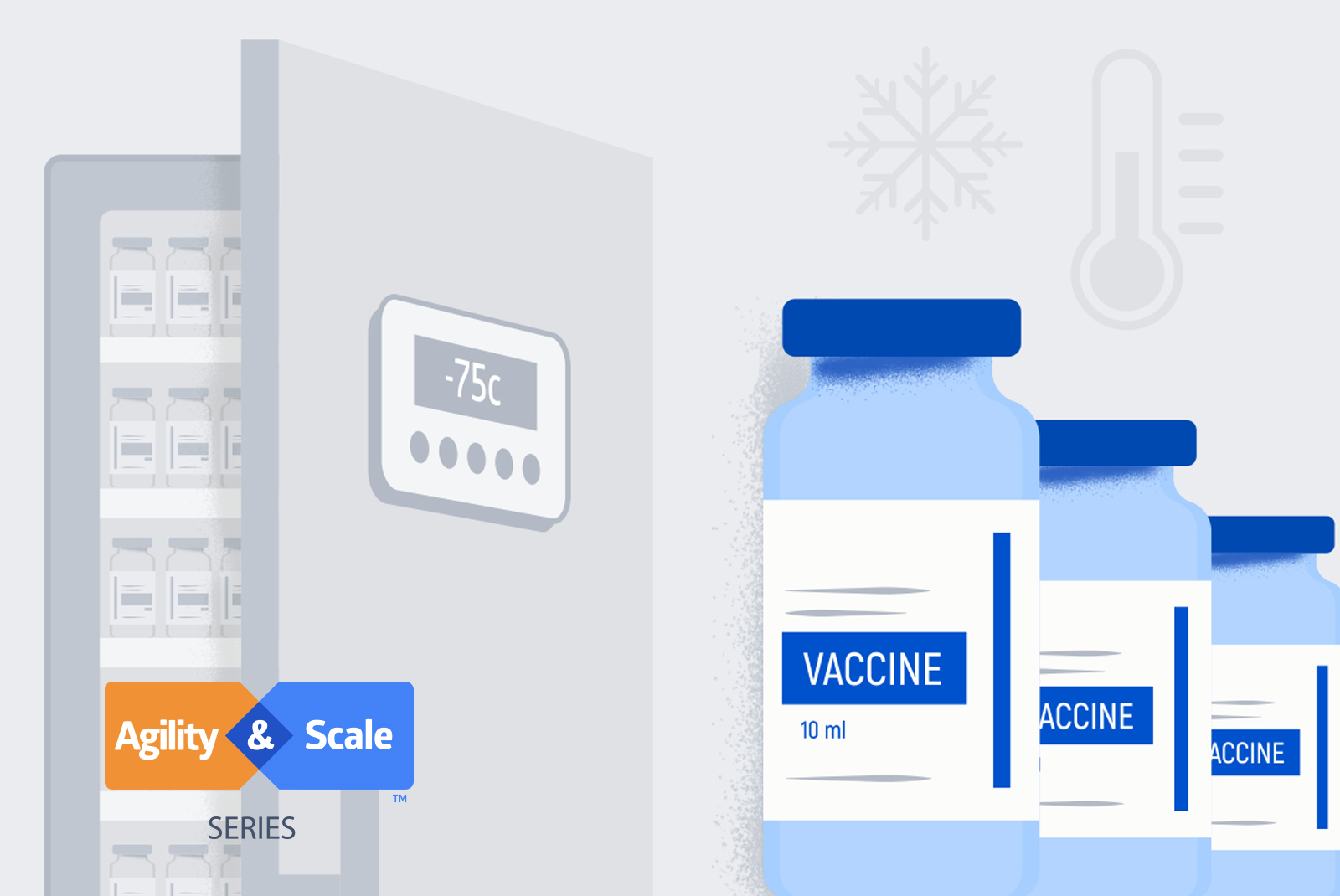Vaccine storage and its evolution: Webinar recap
Navigating the ever-changing COVID-19 vaccine cold chain.

It’s hard to believe that it has been well over a year now since the COVID-19 vaccines came on the market—transforming how we’re able to live and work within this pandemic state. New innovations often bring new challenges, and in the case of mNRA technology used for the Pfizer and Moderna vaccines, cold storage is one of the most critical elements in preserving the effectiveness of the vaccines.
Sophie Barash, product manager in Medline’s Lab Division, recently spoke to Matt Tallman, Chief Commercial Officer —B Medical Systems, Jason Guilliam, Key Account Manager—Horizon Scientific, and Joe LaPorte, Product Director—PHCbi North America about current trends in cold chain management in the Medline webinar, “The Evolution of Vaccine Storage: Navigating the Ever-Changing Vaccine Cold Chain.” Among other topics, Barash and the three panelists covered the following topics:
- The evolution of cold storage over the years
- How has COVID-19 impacted changes for cold storage?
- New NSF standards for cold storage
EXPERT-LED WEBINAR
Didn’t see the webinar? If you were unable to attend or would like to watch the recording, please click here.

Changes over the years
As the panelists all contested to, historically, there was not as much awareness as needed on proper refrigeration and storage for vaccines. The CDC has had storage handling recommendations that go way back, but often suppliers would come across “dorm-style” refrigerators in place of what should have been purpose-built units. As the NSF has put forth more peer-reviewed guidelines, along with the necessity born out of COVID-19 vaccines, that is starting to change for the better.
The rise of purpose-built units has brought innovation in auto-defrosting methods, temperature control logs and more, providing better solutions for defrosting specifications, time and temperature management and removing any stress of human error. The transformation of the vaccine infrastructure has been critical to what was needed to prepare for COVID-19.
How has COVID-19 impacted cold storage?
Most significantly, both vaccine providers and the general public have had to become much more knowledgeable about the different types of vaccines and how to store and administer them properly so as to not waste doses. Most vaccines common for childhood immunization need to be stored at approximately 2-8 degrees Celsius. COVID-19 vaccines and other mNRA vaccines must be stored in a freezer, between -50 and -15 degrees Celsius or a deep or ultra-low freezer (around -80 degrees Celsius), depending on the vaccine. Any variability from these temperatures can be extremely problematic.
If the cold chain is not properly maintained, vaccine potency may be lost, resulting in a useless vaccine supply.
—CDC Vaccine Storage and Handling Toolkit
Because of this, the CDC Vaccine Storage and Handling Toolkit suggests the use of data loggers with local visual display of current temp + min and max temps, programmable logging intervals of at least every 30 minutes, ability to record daily audits of proper temperature, and a valid certificate of calibration testing.
Non-compliance is common, with no recording or very little recording of temperature logs. And, unfortunately, there is no regulation from state to state; another reason why data loggers are recommended to make sure vaccine temps are accurate and viable. The panelists also suggested taking on third party or a remote temperature monitoring solution that can verify compliance and provide contingency plans for any deviation from the standards.
NSF to the rescue
The NSF International (NSF), released its Vaccine Storage Standard NSF 456, defining storage unit performance standards and construction of storage units. The NSF/ANSI 456 is a voluntary standard and was developed as a generalized standard for characterizing performance and construction requirements for vaccine refrigerators and freezers.
Where these differ from the CDC guidelines is that this standard is peer-reviewed from members of public health agencies (including the CDC and NIST), healthcare providers, vaccine suppliers, and equipment manufacturers. The focus, again, is to provide a standard that generalizes construction and performance requirements for vaccine storage.
Although no there is no regulatory body, there has been rigorous testing throughout. And the reason the standard came into play in the first place is that back in 2012, the US DHHS (Department of Health and Human Services) had audited clinicians administering the vaccines and many were exposed to inappropriate temperatures, were expired or lacked necessary documentation.1
The pandemic put greater focus on the cold chain and made providers look at what they were currently using and make better choices where needed. Also, providers are starting to think about the equipment they are buying more strategically in terms of regulation requirements, third-party monitoring, data loggers, temperature control, etc.
Explore more content about cold storage:
Below you will find panelist information and related resources that were discussed throughout the webinar. If you are interested in learning more about Medline’s cold storage portfolio, visit meddevod.wpdev.medline.com or call 1-800-MEDLINE to find your local sales representative.
Panelists:
Matt Tallman
Chief Commercial Officer – B Medical Systems
https://www.bmedicalsystems.com/en-us/
Jason Guilliam
Key Account Manager – Horizon Scientific
https://americanbiotechsupply.com/
https://norlakescientific.com/
Joe LaPorte
Product Director – PHCbi North America
https://www.phchd.com/us/biomedical
